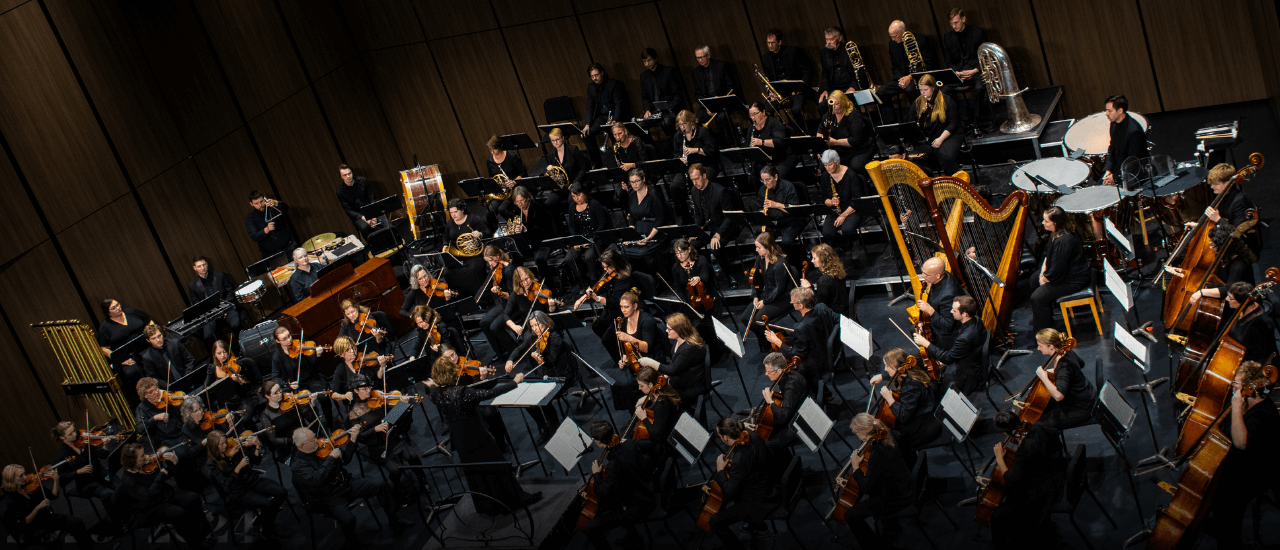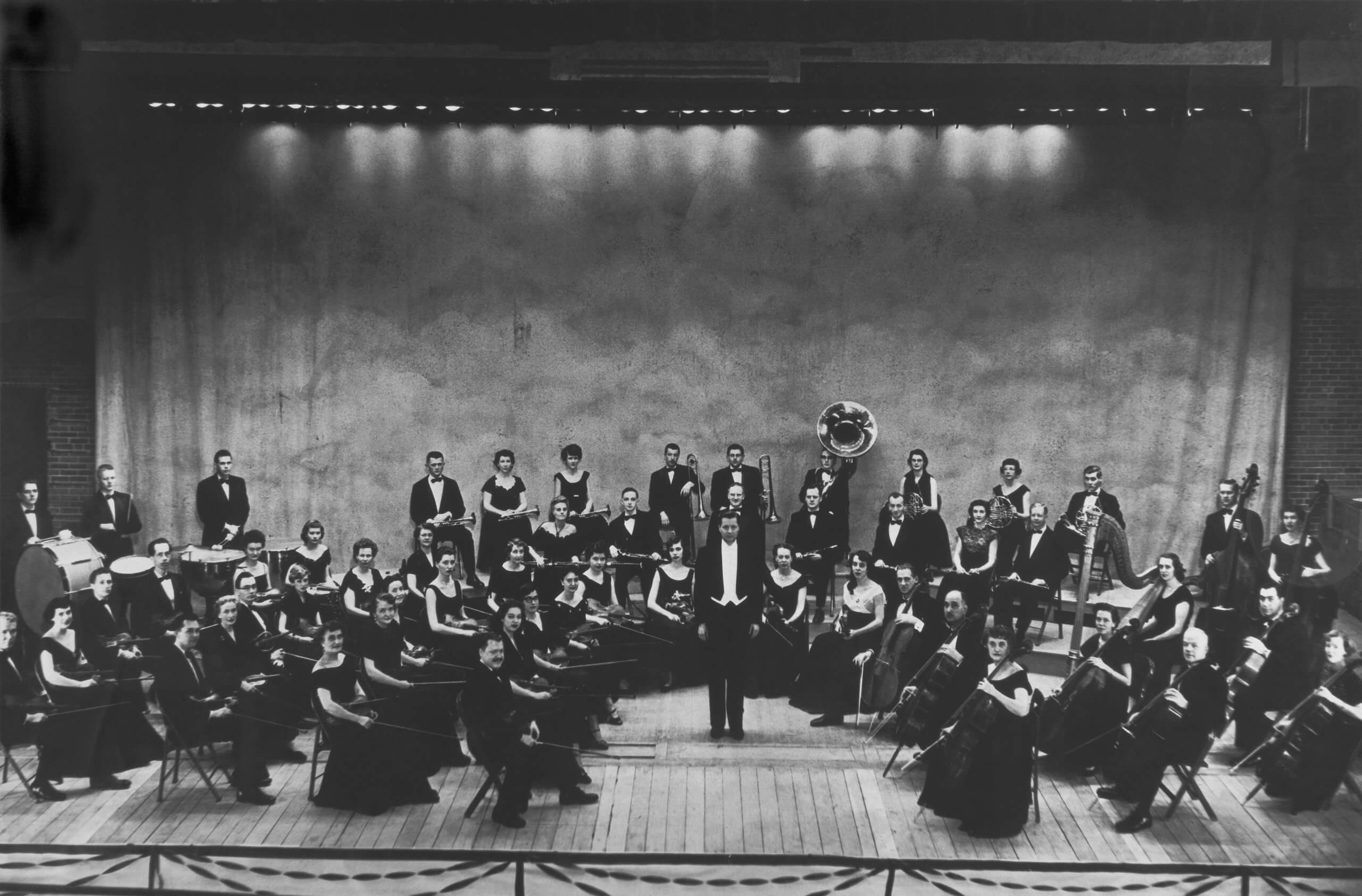About Us

Get to know the Billings Symphony!

Our Mission
Founded as the Billings Symphony Society in May 1951, the organization’s mission is to enrich all lives through music.
The Billings Symphony is composed of the Billings Symphony Orchestra, Billings Symphony Chorale, and the Billings Symphony Youth Orchestra, presenting an annual season from September through June featuring a Classic Series, Sukin Series, and a free Family Series that includes the annual tradition of Symphony in the Park.
Each year, the Billings Symphony helps introduce thousands of people throughout south-central and eastern Montana and northeastern Wyoming to music through Explore Music!, education and community engagement programs provided to participants at no cost.
Our Vision
Become a premier symphony for a community of our size.
Our Values
We believe that music is a cultural universal, first appearing with the rise of the earliest human societies in prehistory. Access to music is, therefore, a human right, and we carry that belief forward within the communities where we live and work. We live our mission through inviting environments that are accessible to all, and by representing our diverse community on our stages, and in our programing, audiences, and activities.
Land Acknowledgement Statement
Billings Symphony acknowledges that the land on which we perform is the traditional and ancestral territory of Indigenous Peoples who have lived, respected, and nurtured this land for countless generations.
History

In 1950 local musician Robert Staffanson and his wife Ann “Frankie” Staffanson wanted to develop a venue for local musicians to perform and share their love of classical music with the Billings community. With sponsorships from local businesses, revenue from fundraising events, and individual donations by local musicians and music lovers, The Billings Symphony Society was formed.
In 1951 the Billings Symphony began with 55 performers. The introduction of the chorale in 1952 rounded out the musical sound Staffanson wanted to achieve. Performances of the Symphony often sold out. They played two shows on performance weekends, initially at the Lincoln Center Auditorium, then at the Fox Theater which became the Alberta Bair Theater after renovations in 1987. The inclusion of renowned guest artists like Ampara Iturbi, a pianist from New York City began in the early 1950s.
Staffanson’s tenure with the Billings Symphony lasted 5 years. The Springfield Massachusetts Symphony discovered him in a conducting competition. He was hired as their resident conductor based on the recommendation of acclaimed violinist Eugene Ormandy, then conductor of the Philadelphia Orchestra. After his tenure in Massachusetts, Staffanson moved to Bozeman, Montana, where he lived until his death on April 27, 2019. Staffanson and the hard work of many volunteers established the building blocks for the Billings Symphony thousands enjoy to this day.
Replacing Staffanson in 1955, George Perkins (1923-2014) directed the Billings Symphony for 29 years. The organization went through a trying time when a proposal to pay the orchestra members divided the Symphony and the city. During this time a portion of the performers remained with the Billings Symphony under Ernest Hagen. Those who did not stay with the Symphony went to form the Midland Empire Chamber Orchestra, under Perkins. The decision to pay the orchestra was made after the 1965-1966 season when the two orchestras merged with the aid of a local mediator to again become the Billings Symphony. Although musicians could not live solely on their orchestra salary, they were attracted to the area by teaching opportunities, outside work, and collegial relationships with local musicians. Some lived in the homes of musical friends for weeks or months until they could find suitable living situations. Perkins enhanced the tradition of upscale performances, showcasing the classical talent and setting standards for the future.
During Perkins' tenure, board member and banker Al Winegardner conceived of and promoted the Symphony in the Park concert, which premiered in 1972. Sponsored initially by First National Bank, then Norwest Bank along with the Yellowstone Boys & Girls Ranch, and now by Wells Fargo, Symphony in the Park remains a community tradition and continues to bring the excitement of live music free to the public.
Uri Barnea was the BSOC’s first full-time music director from 1984-2004. Under his baton, the Symphony performed works from classical literature and new composers. The Symphony showed exceptional growth in community awareness and support, with Barnea taking the music to surrounding communities and schools such as Red Lodge, Hardin, and Sheridan, Wyoming. These expeditions introduced symphonic music to a new group of listeners who otherwise would have great difficulty attending a season performance in Billings. This was the beginning of Explore Music!, our education and community engagement programs.
Barnea’s vision to attract a younger audience and make a night out at the Symphony a special occasion led to the elimination of the Sunday afternoon performances. He wanted Saturday night to be Symphony night. To support this transition, he also invited special guest artists and conductors to the stage and introduced contemporary works. He began each season concert with an educational introduction specific to the evening’s program. Concert Cues, an educational and interactive discussion before each concert, continues to enlighten our audiences, and Barnea’s famous tagline, “See you at the Symphony!" remains in the community’s mind still today.
May 2005 brought a new vision to the Billings Symphony in the form of its first female music director, Anne Harrigan. She has continued to propel the ensemble into the 21st century by blending popular music with the classical repertoire for which the Symphony is known. By incorporating programming that highlights local artists (Ellen Moak, Chris Smith, Christine Conover), world-class soloists (Midori, Brian Ganz, Rex Richardson), and by constantly increasing the complexity of selections and networking with the visual and performance arts, the Billings Symphony has grown into the premier symphony in Montana and Wyoming.
Harrigan has expanded the Explore Music! programs by taking the annual Family Concert to local communities. She introduced the Kids Conducting Contest at Symphony in the Park. She visits local high schools and colleges, allowing students to learn more about the Symphony and its components. In 2012 and 2020, she conducted at the Montana AA Orchestra Festival. In 2015, she chaired the Montana Association of Symphony Orchestra's (MASO) Young Artist Competition. The winners of this biennial competition are featured in a concert by each of the Montana symphonies.
Harrigan and Dr. Steven Hart, director of the Billings Symphony Chorale, collaborate to open the doors of the community to witness another aspect of what makes this organization special. In addition to one or more appearances each season with the Symphony, the Chorale performs a special choral concert each November at St. Patrick Co-Cathedral in downtown Billings.
The Billings Symphony’s mission statement, “To Enrich All Lives Through Music,” supported by the efforts of the community, conductors, performers, and staff of over 70 years, remains the driving force behind the organization’s success. From Staffanson’s first vision to form an organization where music could live and grow, to Perkin’s formidable composure during the symphony unrest, from Barnea’s love of symphonic literature to Harrigan’s love of people, the Billings Symphony continues to grow, share, and enrich the lives of the community.